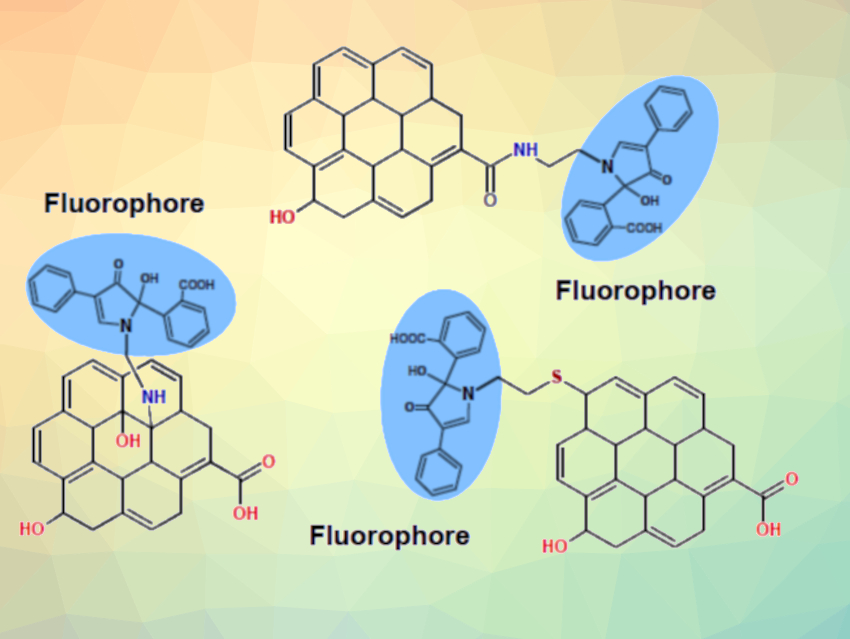Graphene oxide (GO) is a promising two-dimensional material. GO has a complex chemical structure and its characterization remains a challenge. The generally accepted chemical structure of GO includes epoxides, hydroxyls, carboxylic acids, and alkenes. Knowing the exact chemical composition of GO could help to developed chemical strategies for improving GO-based materials.
Vincent Semetey, Chimie ParisTech, PSL University, CNRS, Institut de Recherche de Chimie Paris, France, and colleagues have developed a simple and versatile approach for the quantification of GO functionalities based on fluorescamine. Fluorescamine reacts rapidly and specifically with amino groups to form a fluorescent pyrrolinone. Thus, if one type of functional group on GO is labeled specifically by introducing a primary amine, fluorescamine can be used to quantify this group in the material.
To quantify epoxides, the team reacted GO with N-Boc-ethylenediamine (Boc = tert-butyloxycarbonyl) to introduce the required amine. To quantify carboxylic acids, GO was first thermally reduced and the resulting rGO was reacted with N-Boc-ethylenediamine. The quantification of alkenes was also based on rGO, which was reacted with cysteamine (2-aminoethanethiol) to introduce the amine groups. Finally, the respective amines were deprotected and labeled with fluorescamine (products pictured).
The fluorescence intensities can be used to determine the concentrations of the targeted functional groups. The method could also be extended to monitor any molecules containing primary amines that are grafted onto GO.
- Insights in the chemical composition of graphene oxide via a simple and versatile fluorescent labelling method,
Alexis Piñeiro-García, Sofia M. Vega-Díaz, Giuvanni Mutton, Ferdinando Tristán, David Meneses-Rodríguez, Vincent Semetey,
ChemNanoMat 2021.
https://doi.org/10.1002/cnma.202100121


